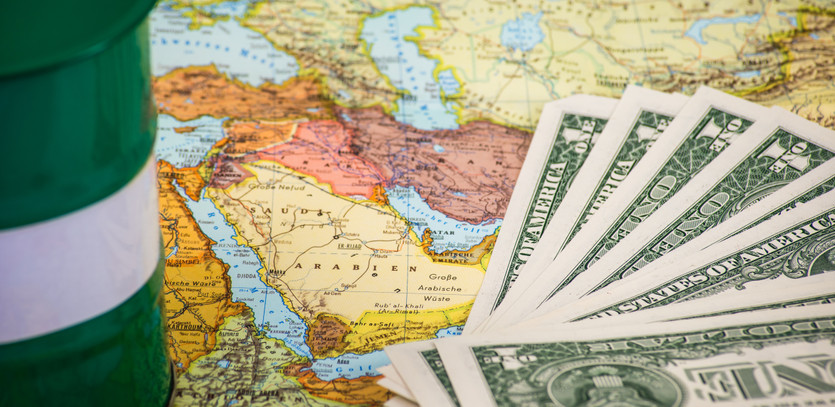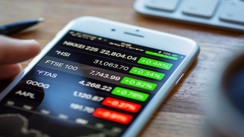Delving into the Concept: What Exactly is a Petrodollar?
In today's global economy, very few commodities command as much influence as oil. And when it comes to transactions related to this 'black gold', the U.S. dollar emerges as the indisputable champion. How did this association come into being? Rewind to a pivotal agreement between the U.S. and Saudi Arabia in 1945. This accord didn't just facilitate the use of the dollar for bilateral oil trade; it set a precedent. As the world increasingly leaned towards this practice, a phenomenon surfaced. Some nations, blessed with abundant oil reserves, began exporting such colossal volumes that their U.S. dollar accumulations outpaced their immediate import needs. An interesting dilemma arose: what to do with the excess dollars? This surplus cache of dormant, unspent dollars got a unique identity - the 'petrodollar'.
Journey Back in Time: Tracing the Petrodollar's Origins
After the smoke cleared from the ravages of World War II, the global financial landscape was ready for a change. The U.S., housing the vast majority of the world's gold, made an unprecedented move. It stepped up and promised to exchange any U.S. dollar for its equivalent value in gold. However, there was a catch. Other nations had to lock their currencies to the dollar's value. This ingenious system, birthed at the 1944 Bretton Woods conference, didn’t just elevate the U.S. dollar's stature on the global stage; it almost consecrated it as the world's paramount reserve currency.
Another chapter in this narrative unfolded on February 14, 1945. The U.S., represented by President Franklin D. Roosevelt, and Saudi Arabia, led by King Abd al-Aziz, inked an enduring alliance. While the U.S. pledged to establish a strategic airfield at Dhahran, Saudi Arabia reciprocated with promises of military allegiance and business collaboration. Despite the backdrop of the volatile Arab-Israeli conflict, this alliance didn't just endure; it thrived.
Highlight: The 1945 U.S.-Saudi bond wasn't a mere footnote in history; it was a game-changer. The intertwined destinies of oil and the dollar culminated in the birth of the term 'petrodollar.'
The 1970s, however, brought turbulence. Internal U.S. economic challenges exerted immense pressure on the dollar. A growing chorus of nations, fearing an unstable dollar, sought to exchange their dollar reserves for the promised gold. This rush led to a shocker in 1971: President Richard Nixon announced that the dollar would no longer be anchored to gold. While the subsequent devaluation made U.S. exports lucrative, oil-exporting nations faced a predicament. Their oil-linked revenues took a nosedive because of their dollar linkage.
1973 was another watershed year. Amid the Yom Kippur War, as the U.S. extended aid to Israel, the Organization of the Petroleum Exporting Countries (OPEC) retaliated with a potent weapon: an oil embargo against the U.S. and its allies. This embargo wasn't just an economic sanction; it reshaped the very dynamics of global oil prices.
Petrodollar Recycling: A Symphony of Economics and Diplomacy
As the 1970s drew to a close, the U.S. and Saudi Arabia realized the need for stability. Their solution? The United States-Saudi Arabian Joint Commission on Economic Cooperation, established in 1979. Under this framework, U.S. dollars continued to dominate oil trade. Yet, there was an innovative twist. These dollars would be 'recycled'—rerouted back to the U.S., engaging American firms in various contracts. These firms, in return, would infuse cutting-edge technologies into Saudi Arabia, propelling its infrastructure into a new era.
Note: Petrodollars aren't just a by-product of oil trade; they drive economies. They fuel lavish lifestyles in oil-rich nations, stimulating imports, elevating wages, and revitalizing the entire economic spectrum. Beyond domestic consumption, these nations had another ace up their sleeve. They funneled petrodollars into sovereign wealth funds, diversifying their investment portfolios and gradually reducing their oil-dependency. Dominating this space are:
- Norway Government Pension Fund Global—$1.34 trillion
- China Investment Corporation—$1.2 trillion
- Kuwait Investment Authority—$738 billion
- Abu Dhabi Investment Authority—$709 billion
- GIC Private Limited—$690 billion
Peering into the Crystal Ball: The Future of the Petrodollar System
For years, the U.S. has strategically wielded the petrodollar as both a carrot and stick in shaping its foreign policies. Many nations tread on eggshells, wary of provoking the U.S., largely due to the looming shadow of a potential petrodollar collapse.
However, in a world pivoting towards renewable energy, questions loom large. How will the U.S. adapt? Can the petrodollar system sustain in a post-oil world?
China, despite its extensive dollar reserves, has been a vocal proponent of a new global reserve currency. Yet, its strategy of closely mirroring its currency, the yuan, with the dollar adds layers of intrigue.
Is the dollar's supremacy in jeopardy? Current indicators suggest a robust dollar. Even as nations galvanize against climate change and embrace cleaner energy sources, the U.S. dollar's legacy, trust, and global acceptance hint at its continued dominance.
Key Highlights:
- The petrodollar signifies the excess U.S. dollar held by an oil-exporting nation, beyond its immediate import necessities.
- 1945’s U.S.-Saudi accord wasn't just historic; it was the bedrock upon which the petrodollar system was built.
- The petrodollar's value doesn't merely mirror the U.S. dollar's health; it can significantly influence global economics and geopolitics.





